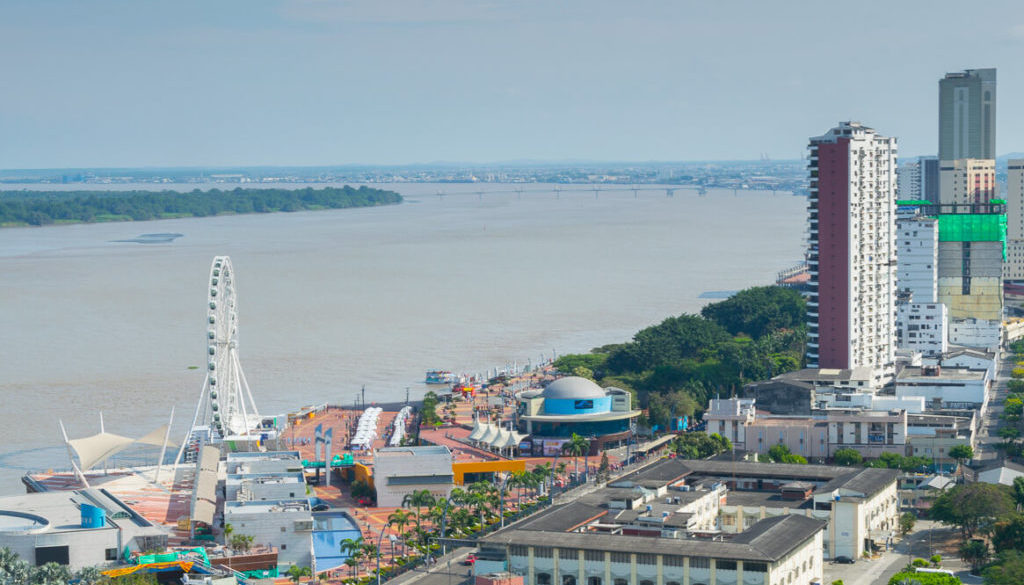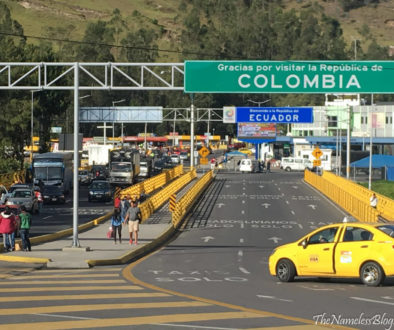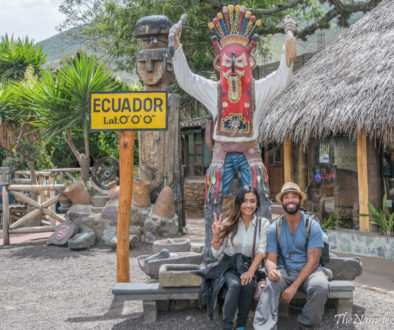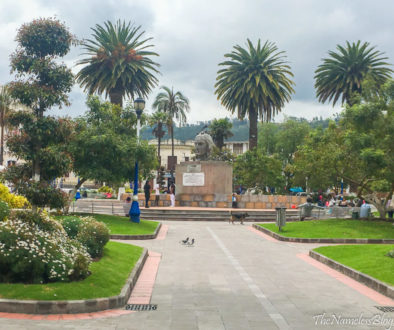Guayaquil
Arriving to the massive bus station in Guayaquil you can’t help but feel like just another number. It’s a massive city with the traffic to match. The heat and humidity can be unforgiving. We spent 3 nights exploring in and around the downtown area. We have gathered our best recommendations in this article, but first…
A Bit of History
Guayaquil is the capital city of the Guayas Province. It’s the largest city of Ecuador with over 2 million inhabitants. The city was founded in 1538 as a native village before falling under Spanish rule until 1820 when it gained its independence.
Best of Guayaquil
- Parque Historico– This is a site that tries to bring you back in time to see how Guayaquil was in its past. It’s divided into three sections including wildlife, architecture and local traditions.. First through the gates you can enter the animal, fauna and flora exhibit. It’s a well kept facility and the animals look well cared for. There is the option to skip this segment if you’d rather not enter the animal exhibits. Next you’ll come across the architectural site which shows you how the city looked in the 19th century. The buildings and train cars were disassembled and preserved at some point before being moved to their current locations. The last segment will take you back in time to visit some of Ecuador’s traditions including the production of cocoa, the chocolate process, flowers, fruits and some replica village houses. (note there are some additional animals towards the end of this exhibit as well).
To Arrive: Uber is your best options $3 each way. Taxi will be around $5 each way.
Hours: Tuesday to Sunday 9am to 430pm
Cost: Free
- Cerro Santa Ana– this was once a very poor area of the city that changed its path when the lighthouse atop the hill became a major tourist attraction for the city. Now the 444 step staircase is lined with local shops, bars and restaurants. Going up during the day is good to beat the crowds with few people and a handful of shops open. At night you’ll feel like you’re in another world when all the bars and people flock in. The sunset is worth fighting through the crowd. There’s also an outdoor navy museum just before the lighthouse.
To Arrive: From downtown it’s easily reached by foot along the waterfront.
- Iguana Park– this free city park is full of iguanas, turtles and pigeons that roam freely. They are wildly living here but we image they stay because people feed them. There are tons of them lounging around the park. Be careful where you walk and wear a hat. Plenty of people were getting crapped on from iguanas and/or pigeons in the trees above.
- Malecon– this is the walkway to the waterfront. Its well taken care of and great for an evening stroll. It’s lined with monuments, a ferris wheel, shops, bars and restaurants. From just in front of the ferris wheel they have some boats that will take you on a short waterway tour.
- Las Penas– this is a small historical neighborhood at the end of the Malecon. It’s colorful and well preserved at the ground level. Take a walk through the streets to visit the many shops, art galleries and street artisans.
Accommodations
Guayaquil in general seems to be a bit overpriced in this category. We theorized that it’s more expensive due to the amount of tourists that use it as one of only two gateways to The Galapagos (by air). As we found out Guayaquil is not a city in which you can just hop from hostel to hostel searching out prices. It’s too large and very much too spread out. We highly recommend booking a place online in advance.
- Tomo Hostel– we stayed here mainly because nearly everything else in our price range was full. It’s a very nice place up on the third floor of a building. It’s main highlights are being centrally located and the roof deck. Dorms start at $13 each in an 8 bed room. Air-condition is only available in the night. The kitchen is not available to guests, which seems to be common in this city. Honestly, for the price I think you could do better.
Food
From our perspective Guayaquil lacks any really cool eating places. Walking away from the malecon into the city you can find many budget eats but none that we found worth mentioning.
- Wendy’s- This is my go-to fast food place. I probably shouldn’t mention this but Wendy’s is my guilty pleasure. There’s one located just blocks from the malecon. The first one I’ve seen since leaving home. Don’t forget to try the frosty, it’s the lovechild of an ice cream and a milkshake.
- Nitro World– This shop at the end of the malecon via Las Pinas is a super cool ice cream place that uses nitro to whip up some really good ice creams. Check them out!
Getting Around
- Uber is your best bet for travel in the city. With yellow city cabs as a second slightly more expensive option.
Afterthoughts
Guayaquil is a decent city to visit for a few days. Three days was more than enough in our experience. It’s a large city that lacks an independent soul. Full of large buildings and not very pleasing to the eye once removed from the malecon by more than a few blocks. They have a few gems that are worth visiting. Although, personally it was one of my least enjoyed places in South America. But you don’t have to take my opinion to heart. Go and see the city for yourself! 🙂
- Note: Many online sources, travelers and even locals talk about Guayaquil being unsafe. We were reminded time and time again by passersby of its lack of security. We never felt unsafe here although it’s a huge city and I could imagine that the safety issues people warned us about being true in isolated incidents. Like always and everywhere in the world using your common sense and not doing anything to put yourself in a bad position will go a long way in personal safety.
Onward Travel
This is a major travel hub with buses headed for all corners of the country.
- Montanita- buses leave every hour from the terminal. 0500 to 1830 during the week and 0500 to 1930 Friday to Sunday.
Cost: $6
Travel Time: 4 hours.























